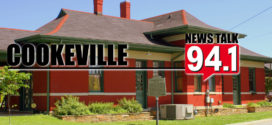Many different species of birds are already making stops in the Upper Cumberland as they are headed south for migration ahead of the winter months.
Tennessee State Parks Area Interpretive Ranger Holly Taylor said birds such as songbirds and waterfowl migrate from the Arctic Circle to the Upper Cumberland around this time of year. Taylor said the reason for why birds migrate south is still a mystery.
“The simplest answer is that they migrate because their parents did,” Taylor said. “But as far as how that got started we are still exploring that. Part of it is, so the southward migration usually they are avoiding bad weather and they are looking for food.”
Taylor said a majority of the birds that migrate south use the Upper Cumberland as a pit stop with their final destination being South America. Taylor said a good portion of the Upper Cumberland’s native birds do not migrate and the ones that do, won’t migrate very far.
“American Robin, Blue Jays, and Nothern Flickers those will move sometimes between elevations,” Taylor said. “Dark-eyed Juncos and Hermit Thrushes are species that we tend to see down in the lower elevations during the winter, but during the summer months you can go up on Roane Mountain for instance and you can see them up there, they actually breed up there.”
Taylor said state parks in the Upper Cumberland provide ideal habitat for migrating birds. Taylor said most birds feed on plants and insects which the parks have an abundance of.
“That land gets protected but it’s not just the land itself its protecting those ecosystems,” Taylor said. “At the end of the day, it’s those native plants that provide the food that they need to feed their young and feed their breeding but also to fuel their migration. These songbirds that are moving through during September and October are not stopping at bird feeders for the most part.”
Taylor said only 50 percent of birds survive migration. Taylor said birds often travel at night and light pollution has caused birds to fly into windows and buildings at high speeds.
 News Talk 94.1/AM 1600 Where The Upper Cumberland Talks
News Talk 94.1/AM 1600 Where The Upper Cumberland Talks







